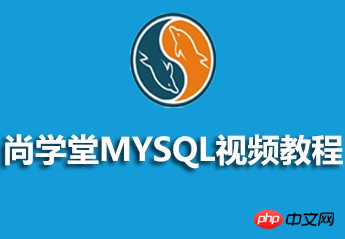
MySQL is a relational database management system developed by the Swedish MySQL AB company and is currently a product of Oracle. MySQL is one of the most popular relational database management systems. In terms of WEB applications, MySQL is the best RDBMS (Relational Database Management System) application software. Today, "Shangxuetang MySQL Video Tutorial" introduces you to the process from installation to using the MySQL database, and introduces the specific operations of each link in detail.

Course playback address: //m.sbmmt.com/course/490.html
This video was created by teacher Ma Bingbing from Shangxuetang. The teacher’s teaching style is:
The teacher’s lectures are simple and in-depth, clear in structure, analyzed layer by layer, and linked together. It has rigorous argumentation and rigorous structure, uses the logical power of thinking to attract students' attention, and uses reason to control the classroom teaching process. By listening to teachers' lectures, students not only learn knowledge, but also receive thinking training, and are also influenced and influenced by teachers' rigorous academic attitude.
The more difficult point in this video is mysql_jdbc:
jdbc (java data base connectivity, java database connection) is a method used to execute The Java API of SQL statements can provide unified access to a variety of relational databases. It consists of a set of classes and interfaces written in Java language. jdbc provides a baseline from which more advanced tools and interfaces can be built, enabling database developers to write database applications. With jdbc, sending SQL statements to various relational data is a very easy matter. Programmers Just use jdbcapi to write a program to send sql calls to the corresponding database.
Here we also recommend downloading source code resources: //m.sbmmt.com/xiazai/learn/1939
This courseware contains the code of the entire project
The above is the detailed content of Recommended source code courseware for MySQL video tutorials. For more information, please follow other related articles on the PHP Chinese website!




